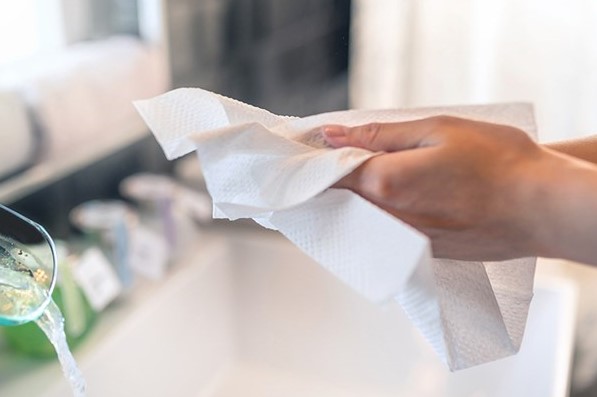 A tale of two cultures
A tale of two cultures
While the fundamentals of the tissue paper business are largely the same in both Europe and China, consumers’ differing needs and demands have created distinct markets. Read on to understand why there is more to tissues, than what you see on the surface.
At USD 246 billion global revenue last year, tissue and hygiene paper is big business. As global population levels continue growing and standards of living rise, there is steadily growing demand for tissue paper products, especially toilet paper.
Pirkko Petäjä, Principal at Pöyry Management Consulting, notes that big pulp manufacturers have already “realised that tissue and hygiene is one of their main customer groups,” shifting their mindset from assuming pulp goes to printing paper to understanding that tissue and hygiene comprises in some cases over half of their sales.
As pulp producers seek to meet their customers’ needs, it’s important to understand how consumer desires — and therefore the manufacturers’ needs — differ in the two major markets of Europe and China.
Quality vs. value
To understand differing manufacturer needs in Europe versus China, it’s necessary to understand the makeup of the consumers. European customers are typically quality-driven and interested in high-ply toilet papers, whereas Chinese customers are largely price-conscious value-seekers.
This has caused European and Chinese manufacturers to approach pulp procurement differently. Yulan Zhang, Secretary of the China National Household Paper Industry Association (CNHPIA), explains that in China, “cost-conscious customers tend to stock up during sales and aren’t terribly aware of quality differences” between products, although they buy name brands because they are considered safer and more hygienic. This causes manufacturers to be quite cost-conscious while simultaneously keeping an eye on pulp quality; an attitude that extends to their pulp suppliers.
European manufacturers, on the other hand, have to watch for quality, says Petäjä and that shows in the region’s unique emphasis on sophisticated tissue converting, decorative embossing and the use of several layers in toilet paper manufacture.
“In North America, they make the base paper quality very good but there’s less emphasis on converting, for instance, embossing. Asia is the same in that they also don’t convert — they use hardwood pulp for softness,” she adds.
High-quality tissue papers are preferred in Europe where there is higher purchasing power. When it comes to the softness of the tissue paper, preferences vary depending on the category. Soft toilet paper is usually considered high quality everywhere. Coloured tissue is preferred in some regions with Russia and France often favouring pastel colours in their toilet paper. There is, for instance, a typical ‘Russian blue’.
European manufacturers also have a profit incentive for pursuing quality, as Petäjä notes: “The ability to offer high-quality products helps sophisticated product categories such as paper towels grow.”
Toilet paper is universal — the rest isn’t
Toilet paper is the largest tissue paper category in both geographies. In Europe, the market is mature and stable which in turn impacts sales. Petäjä explains that the growth of toilet paper as a category depends on population growth and penetration of usage.
Because the populations of European countries are stable and consumption already high, toilet paper cannot grow much as a category. In China, by contrast, toilet paper — which, at 54% of the country’s paper goods market far outpaces the second-place category facial issues (28-20% of the market) — has grown significantly as a category in recent years.
Regional differences also arise around other tissue products. In Europe, paper towels are common. In China, they have not caught on because they are considered wasteful and households prefer to use reusable cloths. Instead, facial tissues are ubiquitous.
Zhang notes that facial tissue usage is up due to the decreased manufacturing costs after moving from cardboard to plastic packaging. Thanks to lower costs, facial tissue has become commonplace in rural areas and smaller third- and fourth-tier cities and its market share has increased. She adds that the usage of facial tissue in all areas of life is constantly increasing, as people are also using it as a substitute for paper towels or napkins, partially explaining the smaller shares of the other categories in the Chinese market.
Brightness rules in Europe, not so much in China
Colour preferences differ also regionally. According to Petäjä, in Europe bright white is dominant. Europe is also unique in that coloured tissue paper in either pastel or bright colours — while still a small niche — is much more common there than elsewhere.
Meanwhile, Chinese laws regulate how white toilet paper can be. Zhang explains, “This is a measure to reduce consumption of manufacturing resources. In 2012, the Chinese government passed a requirement limiting whiteness to no more than 90 on the colour meter to save resources and reduce processing-related environmental pollution.” Thus, toilet papers and other papers subject to this regulation, while white, are not the same bright white as is seen in Europe.
“There is a small group of customers looking for unbleached bamboo tissue because they consider it environmentally friendly, especially in China, where bamboo is a domestic, local raw material,” says Petäjä.
Text: Lorelei Yang
